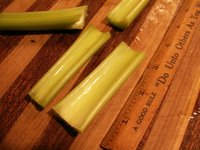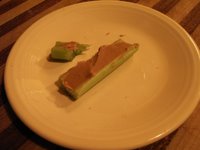
I held a six hundred year old book in my hands the other day.
I had gone down to the Rare Book Room at the university library to see my friend and colleague Bill Garvin and make a request of him. Bill spends most of his days in rareified air. (Seriously...the air is climate-controlled with a constant level of low humidity and temperature to protect the artifacts housed there, so that he is comfortable day in and day out wearing a heavy sweater, whereas the rest of us suffer from tropical blasts of forced air in the winter and shiver from overly refrigerated air in the summer.) Bill shares office space with a Picasso drawing, a Thomas Hart Benton painting, important maps and documents, and hand-crafted books inscribed by artisans centuries ago, back when books were treasures and as much cutting edge in technology as computers are today.
I had been preparing for one of my classes--a class on book arts and image text. I wanted to bring my Small Press Book Publishing class down to the Rare Book Room to see and touch some of the wonderful book artifacts we have in our collection. As we discussed the visit, Bill reached over to a shelf behind his desk, then handed me a book. "You might enjoy seeing this," he said. "I just got it."
Since I knew it was rare (remember the name of the room if you will) I gingerly slipped the book out of its protective sleeve. It was a small volume, about the size of a compact writing tablet, and no more than a half inch thick. The text was painstakingly hand lettered in perfect Latin script. It had suffered a little bit from time. The pages had several tiny holes left there by a diligent bookworm. But it was clearly well-made--the pages still held tightly together and turned as well as the first day they were bound in the mid 1400's.
"It is just a manual on writing correspondance," Bill said. "But what I love about it is that the cover is the page of an even older manuscript."
It was true. Once the scribe had finished the text and stitched the pages together, in a pragmatice gesture he took the vellum page from an older book which had for whatever reason fallen into disuse, turned it sideways, and used it to make the cover.
I am always amazed to touch or hear or read things that come to me from the distant past, things that are windows to others who lived long before... which brings me to Pangur the Cat. Pangur is the star of a poem written in 900 A.D. and precedes our bookmaking scribe by 500 years. The poem, entitled "The Scholar and his Cat", was originally written in Gaelic, probably by a monk. Here is an abridged version:
I and Pangur practice each of us his special art: his
mind is set on hunting, my mind on my special craft.
When the two of us--this tale never wearies us--are alone
together in our house, we have something to which we
may apply our skill, an endless sport.
It is usual, at times, for a mouse to stick in his net, as a
result of warlike battlings. For my part, into my net falls
some difficult rule of hard meaning.
He is joyful with swift movement when a mouse sticks in
his sharp paw: I too am joyful when I understand a
dearly difficult problem.
Though we be thus at any time, neither of us hinders the
other, each of us likes his craft, severally rejoicing in them.
(trs. by Seamus Heaney. From The Great Book of Gaelic, Cannongate Books, Edinburgh, 2005)
The monk's name does not survive these 11 centuries, but Pangur's does. (Clever cat!) I am grateful that evidence of his fleeting life was so well captured and preserved. It all serves as proof that there are things which transcend time, the monuments and cathedrals, yes...but also the intimate things--a writing handbook, a house cat's name and nature.
That someone saved such things and passed them on makes it possible for us to meet at this unlikely intersection...you, me, the medieval book maker and Pangur, the scholar's cat.





